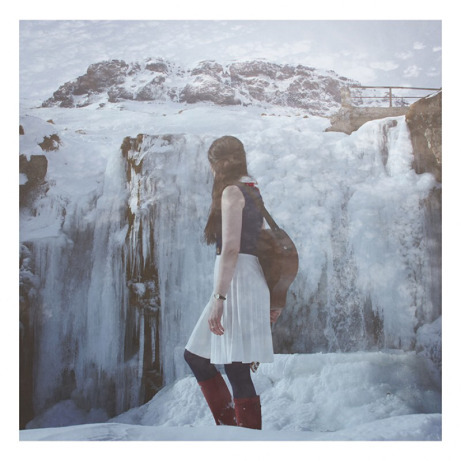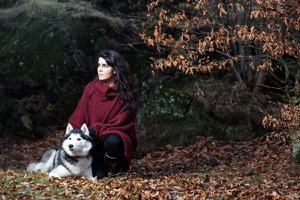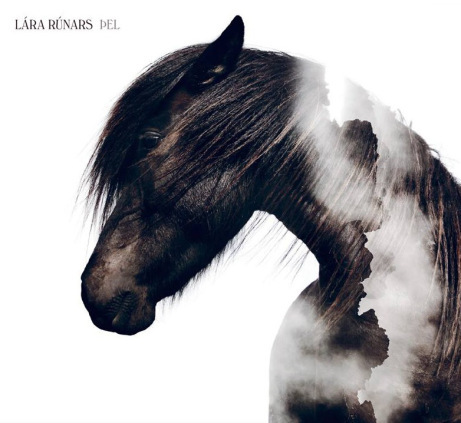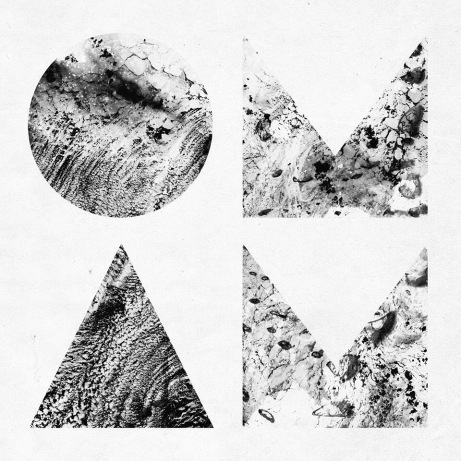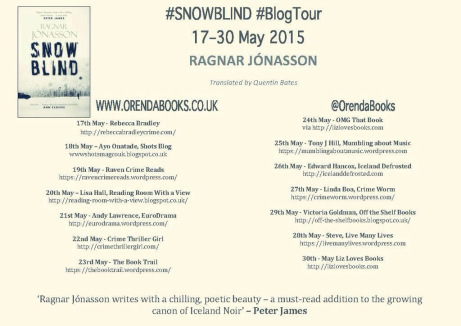Edward Hancox's Blog, page 3
November 5, 2015
Airwaves ’15. Day 1 : Having a good festival, are we?
Morning Bear start the off-venue day in a gentle way, in the foyer of a cinema with a gaggle of school kids and an overwhelming aroma of coffee. Hailing from Denver, Colorado (“there’s merchandise for sale,” the tell us, “but don’t worry, no weed”) they badge themselves as orchestral indie folk, which isn’t far off. They wear their hearts on their sleeves and sing about love and relationships, fairing best on their more upbeat songs such as ‘You and Me, My Dear’ and ‘Despise.’ Well worth checking out during their seemingly hundreds of shows during Airwaves.
One Week Wonder are an Icelandic trio, only today they are not. Their vocalist can’t make it, but they thought it would be “rude to pull out” so bravely here they are, just keyboard and guitar. They play bread and butter indie pop, although have a wicked sense of humor that comes out between songs and reminds me of Flight of the Conchords.
I’m genuinely excited to see East of My Youth, a new Icelandic band, at Kex. Something awkward happens before they start to play. The set is going out live on radio, but the band are in place too early, leaving them silently dancing to a Kiasmos track before the radio DJ can introduce them properly. It’s an all round awkward start, but they do not disappoint. The trio deliver a beautiful set of stirring electronica with vocals that remind me of Florence and the Machine. It would be easy to write them off as Years and Years with a female vocalist, except for their last song. A piano is pressed into service and a heartfelt ballad appears showing the real depth of talent here. They seem genuinely pleased to have played and even more so to have been met with such a rapturous reception. They leave the stage grinning from ear to ear.
For A Minor Reflection are a force to be reckoned with. Playing loud at a packed Hlemmur Square next to the main bus station—several bus drivers come out to see what is going on. An old favorite, ‘Ókyrrð’ gets the crowd warmed up and sounds tremendous. For A Minor Reflection play epic, widescreen post rock in the vein of Mogwai but seem grittier and dirtier than I remember. This is no bad thing, especially when they play with so much enthusiasm one band member has to mend his guitar on stage with gaffer tape and I leave with my ears ringing. This is one blistering set.
Mr Silla is playing at 12 Tónar—the best record store ever—and the place is full to the brim. People are even pressing their faces against the glass windows to peer inside. Mr Silla usually takes a support role and has provided vocals to many Icelandic bands and artists. Tonight though, she is center stage in support of her new album. The venue allows no place to hide and the audience are so close I swear I can see her tonsils when she sings. Accompanied for the first three songs by that most Icelandic of instruments, the iPad, Silla sings beautiful, sexy songs that are gentle and yet intriguing at the same time. This is no more typified than on the sultry ‘Reach for Me’ or the sublime ‘Breathe’. She is then joined by an additional guitarist but this is no distraction from the passion in her voice. None at all.
Next up is Myrra Rós, who manages to squeeze a full band into the tiny space left between racks of vinyl and the encroaching crowd. The music is ‘nice’ enough but does not grab my attention and besides the girl next to me keeps thrusting her backpack into me whilst her boyfriend films the entire set on his mobile phone. Irritated, I think it’s time to go.

Axel Flóvent opened the festival earlier this morning with a show at a home for the elderly. Tonight, he’s in Harpa with his pleasant brand of jangly folk against postcard visuals of Icelandic scenes. It’s fine but I need something more. I get it in the form of Royal in the resurrected NASA, which still reeks of paint by the way. Royal is the project of the artists also known as Borko and Futuregrapher and they make big daft pop songs which are eminently danceable, such as ‘Sangria.’ They compel the crowd to dance, so much so they set the fire alarm off. “Having a good festival, are we?” bellows Borko. Yes, actually.

Fura are late on stage but worth waiting for. Björt Sigfinnsdottír has a sensual, rich voice which works well with the intelligent electronica and some furious drumming from the new drummer. A treat of a performance and sounding particularly good in the lush surroundings of Harpa Kaldalón.
With no chance of seeing Vök due to some severe queues, I head out to one of my favorite venues —Iðnó—to catch Teitur Magnússon. The impressively bearded Teitur is from Ojba Rasta and there is a definite reggae influence here too, except it’s mixed in with a bit of everything else including sounds of psychedelia and long forgotten kids cartoon themes. The ten piece band are crammed on stage and include a smiling and dancing Silla. Does the girl ever rest?
I finish the night with Iceland’s premier party band, Retro Stefson, back at NASA. After 12 hours of the best music, I shouldn’t be fit for anything but Retro Stefson have just got this party, and festival, started.
Originally published on Iceland Review online.


November 4, 2015
Pre-Airwaves?
It’s new to me, this idea of ‘pre-Airwaves’ shows. It’s as if the off-venue schedule has run out of venues to invade, so has started to invade the earlier part of the week instead. This year, for example, there is an off-venue line up for both Monday and Tuesday, and yet the festival itself doesn’t start until Wednesday. I’m not complaining.
First concert of the pre-Airwaves set is ÍRiS, of whom I’ve long been a fan. She performs off venue in the loft space of Dillon, amongst the wooden beams, fashionably bare lightbulbs and slightly sticky floors. Tonight, she is performing three brand new songs. They are wonderful. Electronic trickery plays second fiddle to ÍRIS’s soaring vocals. ‘Newborn Fire’ is an intense opener, and a perfect showcase for her rich, luxurious voice. The crowd listen intently whilst supping Christmas beer. Final song ‘The Witch’ is surprisingly bass heavy, but classy with it. ÍRIS had won more than a few fans tonight, and can look forward to a busy Airwaves.
The northern lights make a brief appearance as a button up my coat and head across to Harpa. It seems like they have been waiting for Airwaves too.
Alone, and performing acoustic guitar, grand piano, accordion and a mesmerizing selection of loops, Sóley is simply stunning. Despite promising “accordion drone music, so if you’ve come for a pop concert you’ll be disappointed,” no one in Harpa Kaldalón was sorry to have come. This is Sóley at her absolute best; performing her dark fairytale world to an adoring audience.
This is actually a rescheduled concert from the summer, and part of the ‘Tin Drum’ series. Sóley was unable to perform in August due to her European tour, but we clearly benefit from Sóley returning on top form, albeit on the eve of the country’s biggest music festival. No matter though, Sóley tells us that she’s impressed to see us here tonight, and even her mum is in the audience.

Sóley started with a clutch of pieces that were clearly different from her usual set—a kaleidoscopic looping piece, the aforementioned accordion drone—“I won’t be offended if you fall asleep,”she says beforehand— and a startling piano piece that serves the show the sheer talent on show here. She completed a full set, during which the audience were so completely quiet and attentive, you could hear a pin drop. Sóley played songs mainly from her new EP, and her sublime debut album, We Sink. Sóley’s songs, like her voice, have a fragile, melancholic beauty to them. ‘Blue Leaves’ on the grand piano and ‘Wedding’ on acoustic guitar stood out in particular, but each song was so beautiful it was at once capable of captivating its listener and stirring deep emotion. I leave worried that I may have seen the best set of the week, and before Airwaves has even started.
Back in Dillon, the atmosphere has changed. It’s rammed quite literally to the rafters as word has clearly reached the masses that this is one of the few places in Reykjavík with pre-Airwaves music. The place is heaving with people even queuing on the stairs. Condensation runs down the windows and the bar staff. Grúska Babúska is the final act on of the evening, and seem a little incongruous to the crowd who may be after a little more than the wonky, synth pop on offer. No matter, the all female band put on a fine performance despite the restless, jostling crowd in front of them. New songs seem to make the most of the newest member—ÍRiS—and her talents whilst the older songs bring back memories of Airwaves in years gone by. I’m sure I saw Grúska Babúska perform a breakfast show on year, which was quite odd whilst tucking into coffee and toast.
Outside the northern lights have given way to a fierce squall of hail that threatens to take the skin off my face. If tonight is anything to go by, it’s going to be interesting to see how this years Airwaves pans out.
Originally published on Iceland Review online.


October 27, 2015
15 Icelandic Bands to check out for Airwaves ’15
Forget the overseas talents of Beach House and Hot Chip (both surely in violation of the ‘you can only play Airwaves once’ policy), the histrionics of Father John Misty, or the London grime of Skepta, Airwaves has the very best home-grown band on show. Here is a list of 15 not-to-be-missed Icelandic bands, in no particular order.
Gangly
This secretive electro producing trio have now been unmasked to be Sindri from Sing Fang, Jófríður from Samaris/Pascal Pinon and Úlfur from Oyama. With such pedigree, how could you go wrong?
John Grant and the Iceland Symphony Orchestra
Ok, ok, so John isn’t strictly Icelandic, but the Symphony Orchestra definitely is and John is pretty much Reykjavík’s adopted son. With music from the superb Pale Green Ghosts lending itself to such classical embellishment this is going to be very special indeed.
Tófa
Punk rock courtesy of members of Rókkurró and For A Minor Reflection. Still relatively unknown, the promise of one of enough energy and spirit to blow any remaining jet lag well away.
Sóley
A perennial favorite, Sóley is riding high after an international tour the wonderful Into the Deep album and even a new EP. Sóley is playing several shows, including a pre-Airwaves show and most excitingly is inviting fans to her own studio for the afternoon. Expect beautiful yet off kilter tunes and a dark sense of humor.
Vök
An Icelandic trio that are going from strength to strength. Don’t let the saxophone put you off, this is slick and sexy stuff with similarities to The XX and The Knife but with more, you know, Iceland added. They are playing at the Vodafone hall before Hot Chip and might just beat them at their own game.
Axel is a 19-year-old from Húsavík, Northeast Iceland, who plays spellbinding modern folk music that is well beyond his years. He is also playing Airwaves about 300 times in total, so there is no excuse for missing him!
DJ flugvél og geimskip
Described by the artist as “electronic horror music with a space twist”, DJ flugvél og geimskip (translates as DJ Airplane and Spaceship, of course) is a one girl show which is, well, out of this world. Might just be the strangest thing you see at Airwaves this year.
East of my Youth
Presumably named after the Jack Kerouac quote, this trio released their debut single ‘Lemonstars’in the summer, and promise their own brand of freshly squeezed experimental pop for Airwaves.
Kiasmos
The side project of compose Ólafur Arnalds and Janus Rasmussen from Bloodgroup, Kiasmos produce eminently danceable minimal techno, that went down a storm at Airwaves last year, probably whilst in a storm too.
Singer Arnór Dan may have also have benefited from working with Ólafur Arnalds on his recent projects, as their new album Destrier benefits from a more mature and detailed soundscape than its predecessor. Known for energetic and chaotic live shows, and it’ll be interesting to see if they tone things down for an intimate show in Fríkirkjan.
Mr Silla
Another Airwaves favorite usually seen adding sublime backing vocals to other performances, Mr. Silla is actually Sigurlaug Gísladóttir (no idea where the ‘Mr’ comes from) and is taking center stage this year, with a new album to promote. With a voice like hers though, the stage is hers for the taking.
Grúska Babúska
This quirky all female band are on the cusp of releasing their second album—their first was released as a Russian Babushka doll with a USB stick inside—and have added the supremely talented IRíS to proceedings.
FURA
FURA is a collaboration between the songstress Björt Sigfinnsdóttir and the producer duo Hallur Jónsson and Janus Rasmussen (when not performing with all his other projects). From humble beginnings as record store workers they now produce late night electronica and stunning vocals from the eastern reaches of Seyðisfjörður.
Milkywhale
The brand new project between dancer Melkorka Sigríður Magnúsdóttir and FM Belfast’s Árni Rúnar Hlöðversson, this promises to be a visual spectacle as well as musical with mention of “trivial things like love, trampoline exercises, whales and white animals.” No idea what a ‘milkywhale’ is, by the way!
Soft and sensitive vocals from this talented songstress, plus the promise of a five piece band to support her, Soffía is playing on Sunday night at Gaukurinn which might be the sensible option if five days of hard partying have taken their toll.
Originally published on Iceland Review online.


October 13, 2015
Ingunn Huld needs your help!
Ingunn Huld is a rising Icelandic star, and produces beautiful acoustic folk pop. She’s trying to raise funds for her debut album on Karolinafund, an Icelandic crowdfunding website. I caught up with her to find out a bit more about crowdfunding in Iceland and the album itself.
You are crowdfunding your debut album at the moment. How’s it going?
It’s going super surprisingly well! In just a week it was up to 60% and now as I write this it’s 90% and still 21 days left!
Is crowdfunding big in Iceland?
It’s getting bigger I think but to be honest I’m not sure how big it is. Icelanders are a bunch of creative people thus a lot of creative projects being made all the time – so crowdfunding fits very well with that I think.
What happens of you don’t raise enough funds? I mean, I’m sure you will…
Karolinafund works like this: People can support and in return get something like an album or concert ticket or something but it only will be funded if the goal is met. So if you don’t raise enough funds no one pays nor gets their CD or whatever they chose.
Your debut album is called ‘fjúk’. It sounds a little like another word in English. How should we say it and what does it mean?
Tough question. We have a lot of words in Icelandic for different kinds of wind and snow and fjúk is one of them. I was having a meeting with my friend that does the album artwork and he suggested why don’t we check out different names for wind or snow since the lyrics on the album are rather nature friendly… – When I came across this word I thought it fitted really well and later found out that it actually is found in one of the songs and that song is accidentally connected well with the album photo. So Fjúk can mean skafrenningur or whiteout – snow with wind.
Can you describe your sound? What should we expect from ‘Fjúk’?
Another tough question! Ehmm… maybe folk-pop something… I really value live music and wanted to keep that factor so when we recorded most of the instruments the geniuses were all playing together in the epic studio Geimsteinn in Reykjanesbær. The drums were in one room, the bassist in the room where the sound engineer was, the guitar player in the kitchen, the piano player in a room with an old grand piano and in the hallway while playing the keyboards. I was sometimes in the bathroom singing demos so that for the live feel of the album – and then when the vocals were recorded it was in another studio with another sound engineer that brings something different – and I’m very happy about how it sounds.
Are you playing Iceland Airwaves this year? Any special plans?
I’m playing a few off-venue gigs but super excited about going myself to Iceland Airwaves to listen to all the wonderful bands. My younger brother is playing and everyone should check out his band Vio.
Special plans – the album will hopefully be out in the beginning of November so later this week I have to go full on into planning release concerts. Up to now I haven’t had much time to think about because all the album publishing work is pretty new to me and time-consuming. I think I’ve learned a lot from this.
Find out how to support Ingunn’s Karolina Fund here.


September 26, 2015
Shelf Talker
September 24, 2015
Beware of the ‘Skyr’.
After years and years of tracking down rare imports of Skyr, building trips around Iceland to hit the maximum number of pots per trip, extolling the virtues of skyr to anyone who’d listen, and even travelling to New York to taste the excellent Siggi’s, my Skyr dreams came true when in April, it was announced that Skyr would finally be arriving in the UK.
First available from Asda (a Walmart owned supermarket in the UK ) I ran to the nearest shop and bagged me a few pots. Alright, alright, I ordered on line, but it came the very next day, and you get the picture. I eagerly pulled back the foil lid. I’d chosen the Strawberry flavoured version, and I couldn’t wait to dig in. I spooned a mountain of Skyr into my mouth. It wasn’t Skyr. It didn’t taste like Skyr, smell like Skyr or feel like Skyr. It tasted something like a thick, bland yoghurt. This, and I should know being International Skyr taster of the year 2014, wasn’t Skyr.
I checked the labelling. I was in for some surprises here too. I was right, it wasn’t Skyr – it was ‘Icelandic style yoghurt’. This is confusing as Icelandic Skyr is actually more like a form of cheese than a yoghurt. I also noticed that it was made in Germany, and that the manufacturers Arla are actually a cooperative based in Denmark. Suddenly I understand why it doesn’t taste like Icelandic Skyr. It’s not Icelandic or Skyr.
Imagine my surprise then, when I saw the first Arla Skyr advert on TV. My nightly viewing was interrupted to show a young lad delivering messages across very picturesque and typically Icelandic scenes (save for a suspiciously photoshopped Geysir) powered by Skyr. The lad grows up to be a handsome bearded Icelander, still tucking in to Skyr. Only this wouldn’t be Arla Skyr, would it? Because Arla Skyr isn’t available in Iceland, and I can’t see any Icelanders smuggling a crate on to the next Icelandair flight from Heathrow.
Arla, unwisely, don’t stop there. Iceland Review reported the following exchange from the Arla website to a UK customer. “Hello everyone. Sorry for the late reply – the time difference here in Höfn makes it difficult for me sometimes,”. The time difference for Höfn, South Iceland to the UK is one hour in the summer and zero in the winter.
Jón Axel Pétursson, director of sales and marketing at MS Iceland Dairies, where they really do make real Skyr, quickly commented on the Arla Facebook page “How about being honest to your consumers in the UK and tell them the truth: this is not an Icelandic skyr that you are selling in the UK. It’s a yogurt that is produced in Germany and has nothing to do with the real Icelandic skyr”. Go Jón!
Jón also asks where in Höfn the Arla factory is situated as Höfn is a small town where no one has heard of Arla’s presence. A quick check of their website shows that Arla’s offices are in Viby, Denmark.
MS Iceland Dairies might be the hero of this piece. Not only did they produce a mocking youtube video directly poking fun at the faux-skyr, they have also have plans to bring their own Skyr – made in Iceland, from milk produced in Iceland, by Icelandic cows – to the UK later this year. That’s going to be something worth trying. You should probably pass the message around.


July 24, 2015
Music Review: Lára Runars – Þel
There is a real gem on this new offering from Lára Rúnars. It is about halfway in, and is a delicious slice of sunny 80’s style synth pop, that goes down well with a summer barbecue and a glass of something cold. By the time the trumpets kick in on ‘Frelsi’ your neighbors will be dancing around too.
It’s a surprise because the rest of the album is relatively dark. The album starts with the bleak and occasionally jarring ‘Rósir’, before moving on to a darkly brass filled ‘Ölgusjór’ which could easily be the theme tune for a Nordic crime series.
‘Lofum Gyllta Jöro’ is a sparse ballad, and a decent showcase for Lara’s impressive vocal talents, but does mark a loss of momentum to proceedings. ‘Mistur’ and ‘Sláttur’ are somewhat formulaic.
Lára’s last album Moment was a bit of a mess, a seemingly failed record label attempt at propelling her into the mainstream, misplaced English lyrics and all, where as Þel feels much less contrived. Whatever the reason for the misfire, and despite that it’s been a long time since collaborations with Damien Rice, or showcase concerts for high profile music magazines, it finally feels like Lára is back in the saddle again, and Þel is much, much stronger as a result.
Originally published on Iceland Review online.


July 13, 2015
Book Review : The Little Book of the Hidden People
This book starts with a health warning. It’s a warning about the validity of trusting that all Icelanders believe in hidden people. Sure, some do and there is mention specifically of the elf school, and individuals that claim to see such beings, but the author, Alda Sigmundsdóttir, is quick to point out the current view, where such misconceptions may have arisen, the origins of hidden people stories and crucially, the role of the international press in hyping the view of hidden people beyond, well, belief.
Alda Sigmundsdóttir is well placed to offer such advice. She is a well known writer and commentator in Iceland and overseas. As well as a very successful blog, a novel, a book about the financial meltdown, Alda also has a series of books: The Little Book of the Icelanders,The Little Book of the Icelanders in the Old Days, and now this one, The Little Book of the Hidden People. Her strength is that she is able to offer the view of an Icelander, and with the help of whip smart observations and a good helping of humour.
With the warning out of the way, Alda begins to tell us a number of stories of the hidden people in Iceland. These are curated from oral accounts and texts from right across the country. They are well researched and full of charm. As Alda points out from the outset, some of the stories have a peculiar turn of phrase, or sometimes lack clarity or detail in the crucial moments. This is due to the account being taken as found, and Alda strictly prohibiting any embellishment of her own. Whilst this is commendable, it can lead to some stories being unduly short, or taking an extra amount of concentration.
The saving grace though, is the short passages that follow each story from Alda herself. In these, she imparts knowledge on the subject, as well as her own opinion on the account. These are astute observations, and from an informed perspective. Often they are an informal foil to the solemn tales, for example, one tale recounts a maidservant who is punished by elves for mistreating children and being seduced by a man. Alda adds: “I don’t think we need to dig deep to find the moral of this story: Do not covet other people’s belongings, slap their kids, or sleep with their husbands. THE END.” And you can’t argue with that.
I’m not going to recount the tales of hidden people here. Alda does a fine job of it. Some of the stories will shock you with their sex and violence, or by their very subject matter. One such example is the story of ewes being impregnated by elf rams. No, really.
This is a neat addition to Alda’s ‘Little Book’ series, and I’m sure it will delight her fans as well as new readers alike. As a collection of folk tales about the hidden people of Iceland, I’m not sure there is anything else out there quite like it.
4/5
Originally published on Iceland Review online.


June 26, 2015
Music Review : Of Monsters and Men – Beneath the Skin
With their debut album, My Head Is An Animal, the band rode the indie-folk wave that was in the wake of bands such as Mumford and Sons. It was a hugely successful ploy, and promoted the band from the ranks of being successful in Iceland to a stadium filling, festival favorite, multi-platinum selling machine. The album was buoyed by the success of single ‘Little Talks,’ with it’s catchy “Hey!” and Icelandic quirkiness making it one of the singles of 2012.
It would have been easy for the band to lose it all in this maelstrom of success, and succumb to difficult second album syndrome. It would have been all too easy to have written some songs on the road, used their well-trodden formula, added a sparse guitar and a few more “heys” in the background, packaged it up and sold it quickly to make a few króna. Thankfully, they haven’t.
Beneath The Skin is a much more mature offering. It still sounds like Of Monsters and Men, and still relies heavily on the partnership of Nanna Bryndís Hilmarsdóttir and Ragnar Þórhallsson, but things have changed. Gone are the nonsensical lyrics (no more pet dragonflies a lá ‘Dirty Paws’) to be replaced with genuine themes and issues. The music has changed too, nothing drastic but there isn’t a ‘Little Talks’ here, and it’s none the poorer for it.
‘Crystals’ is all powerful drums and a showcase for Nanna’s fragile yet emotional voice. It’s mirrored by ‘Empire’ which seems to be a close relation, albeit featuring Raggi more than Nanna. ‘Slow Life’ is a slow burning delight, whilst ‘Thousand Eyes’ has a sting in its tail. ‘Organs’ is one of the albums gentler, more intimate highlights—it feels like Nanna is singling solely for the listener.
It’s not all plain sailing though. ‘Humans’ and ‘Wolves without Teeth’ are dangerously close to middle of the road, dinner table accompaniment territory, with little bite or hook to catch the listeners’ attention.
Oddly, two of the best songs ‘Winter Sound’ and ‘Backyard’ are not on every version of the album. They are on the deluxe version and the Icelandic version. They are both great songs, especially ‘Winter Sound’ which is a real ear-worm, as they say, and deserves much more than to be an afterthought.
Beneath the Skin is an accomplished album which benefits from repeated listens. Of Monsters and Men haven’t lost any of their allure, or been adversely affected by their success. Let’s hope that they continue to produce such ear worms.
Originally published on Iceland Review Online.


May 25, 2015
Snowblind blog tour – an interview with Ragnar Jónasson
A brand new, fresh-out-of-the-box Police Officer leaves his cozy life in Reykjavik for a new world in a frozen and insular Siglufjörður in North Iceland. His arrival coincides with a series of events, including a murder and nasty, malicious assault. As the tension builds, so does the snow, leaving the characters and readers shovelling their way out of a growing atmosphere of claustrophobia.
Ragnar Jónasson’s first novel, Snowblind, is a gentle but intricate work where the location plays just as important role as the characters themselves. Siglufjörður, and especially in the winter setting described by Ragnar, seems a million miles way from urban Reykjavik. At one point, a key suspect is released on the premise that snow blocking the roads will prevent him from fleeing anyway, and additional officers from Akureyri also fail to make it to the town.
As if to emphasis this point, Ragnar himself has started to tweet photographs from Siglufjörður itself. If the combination of these photos and the descriptions of the town in the book aren’t enough to have you booking flights and a rental car, then I don’t know what is!

Photo courtesy of Ragnar Jónasson on Twitter
Snowblind is undoubtedly assisted in its English translation by Quentin Bates, himself a accomplished crime writer and virtually an Icelander himself after living their for years, Together, they make sure that Snowblind is true to its Icelandic roots – see the passage describing reading a new book at Christmas – and this adds hugely to its appeal.
Ragnar was kind enough to answer a few questions for me.
Your latest novel – Snowblind – was released in English on in April. Congratulations on this. What’s it all about?
Snowblind is the first book in a series, called Dark Iceland, set in Northern-Iceland, mainly in and around the small town of Siglufjörður. Ari Thór Arason is a rookie policeman on his first posting, in Siglufjörður, and when a young woman is found lying half-naked in the snow, bleeding and unconscious, and a highly esteemed, elderly writer falls to his death in the local theatre, Ari is dragged straight into the heart of a community where he can trust no one. An avalanche and unremitting snowstorms close the only road into town, and the winter darkness threatens to push Ari over the edge.
How important is Iceland and Siglufjörður as a setting for your work and the Dark Iceland series?
Siglufjörður is the town where my father grew up and where my grandparents lived. We visited Siglufjörður every summer when I was growing up and I still go there as often as I can. My grandfather wrote about the history of Siglufjörður and so when I needed a setting for my series it was really the obvious option. Also, it is a town very fitting for a crime novel – it is very isolated, only accessible via mountain tunnels, and with extreme darkness and snow in winter and very long and bright nights in the summertime. But needless to say, in real life it is a very peaceful town!
You have previously translated fourteen Agatha Christie novels into Icelandic. Did you learn anything about crime writing by doing this?
Translating Christie’s books certainly taught me a lot about the construction of a crime novel. I also hope I’ve learnt something from her in terms of plotting and setting. She was the master of clever plots, and I really admire that quality. Therefore my aim is always to have a surprising twist at the end of my books. Also, she was brilliant at creating atmosphere and using setting to her benefit – the Orient Express, the Nile, country cottages etc. To me, Siglufjörður is almost like a central character in the books. Also it’s important to me that Siglufjörður is a real place, which readers can visit. I’ve also set books in other areas of the north, such as Héðinsfjörður, an uninhabited fjord, and Kálfshamarsvík, a beautiful and remote place where there used to be a village – all these places have been important to the booksIt is very hard to say exactly why “Nordic Noir” has been so popular abroad. I think that the setting plays a part, and perhaps the climate as well – the cold winters. But also there have been marvelous writers paving the way, like Stieg Larsson and Jo Nesbo, and also Icelandic writers such as Arnaldur Indriðason and Yrsa Sigurðardóttir.
Photo courtesy of Ragnar Jónasson on Twitter.
You are a co-founder of Iceland Noir. How did this come about? Will it be back next year?
Iceland Noir was an idea myself and two of my colleagues, Yrsa Sigurðardóttir and Quentin Bates, had in the spring of 2013. We met at a crime festival in Bristol and decided to set up a small and friendly crime festival in Reykjavik to draw attention to Icelandic crime fiction. People thought we would take at least a year to prepare, but the first festival was held a few months later, in November 2013, largely thanks to international bestselling author Ann Cleeves, who was the first author to say yes to taking part – and with a big name author like her it proved easier to make the festival happen. We repeated it in 2014, on a slightly larger scale, but sticking to the venue of the Nordic House, a perfect setting for such a festival. In 2013, we promised Ann Cleeves that we would support a festival in Shetland Noir in 2015 rather than hosting our own, as Shetland is the setting for one of her series – so Shetland Noir will be held in November 2015 in partnership with Iceland Noir. But Iceland Noir will be back in Reykjavik in November 2016.
Iceland is actually a relatively safe place to live with an extremely low murder rate. Isn’t this a bit of a problem for you as a crime writer?
It’s hard to say that a low crime rate is “a problem”, but it does pose some challenges to crime writers. It’s important, I think, to make the stories realistic, so one sometimes needs to be creative and look beneath the surface for the social problems and crimes which are not always obvious.
You are a lawyer in Reykjavik when not busy writing. Do you draw on your work for inspiration?
I have very consciously tried not to write about the law or lawyers. I think there is one lawyer in Snowblind, mostly out of necessity because the victim had an interesting will drawn up – but apart from that I want to write about something else, to keep the necessary distance between my work as a lawyer and my writing.
What’s next for the Dark Iceland series?
I have now written five books in the Dark Iceland series. Two of them are more or less only based in Siglufjörður and the rights to those two books have been sold to the UK, so Snowblind will be followed up by Nightblind in English in 2016 (both books translated by the brilliant crime writer Quentin Bates, who himself is an author of series set in Iceland). I wouldn’t be surprised if the lead character of the Dark Iceland series would return in the sixth book, but for the moment I am working on a very different crime story.
Snowblind is out now, and available from Orenda books.






